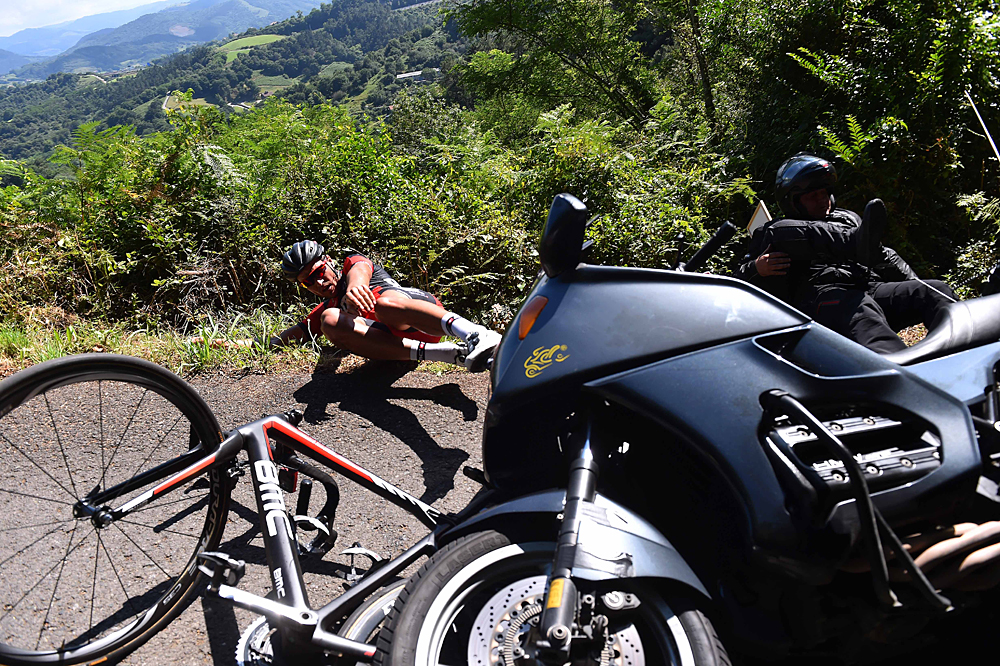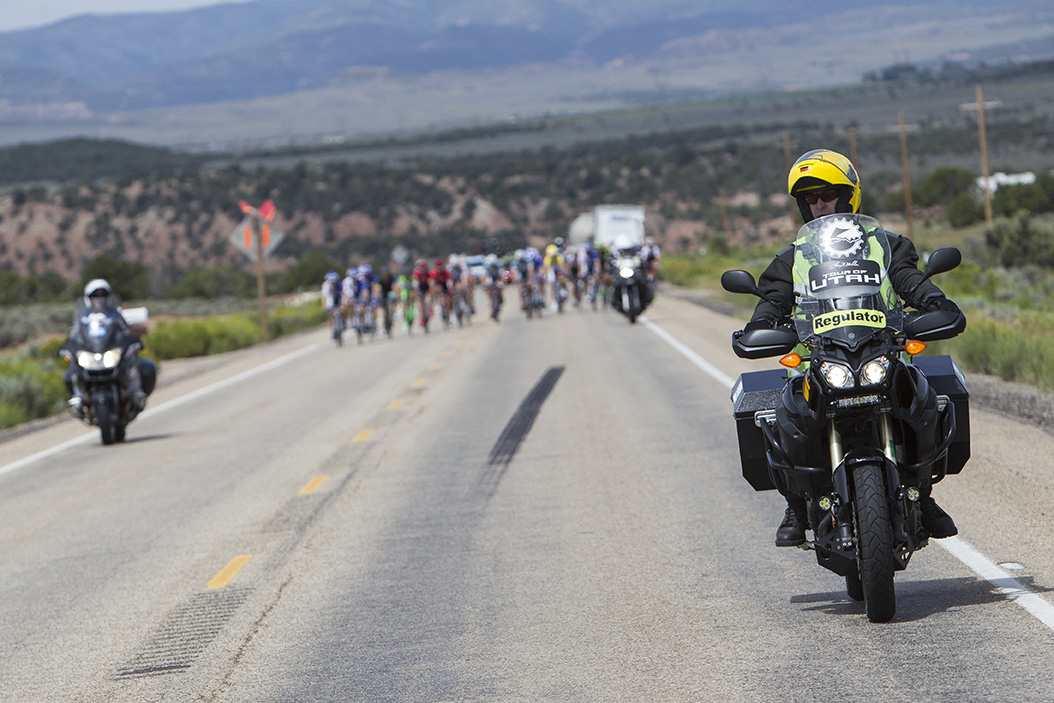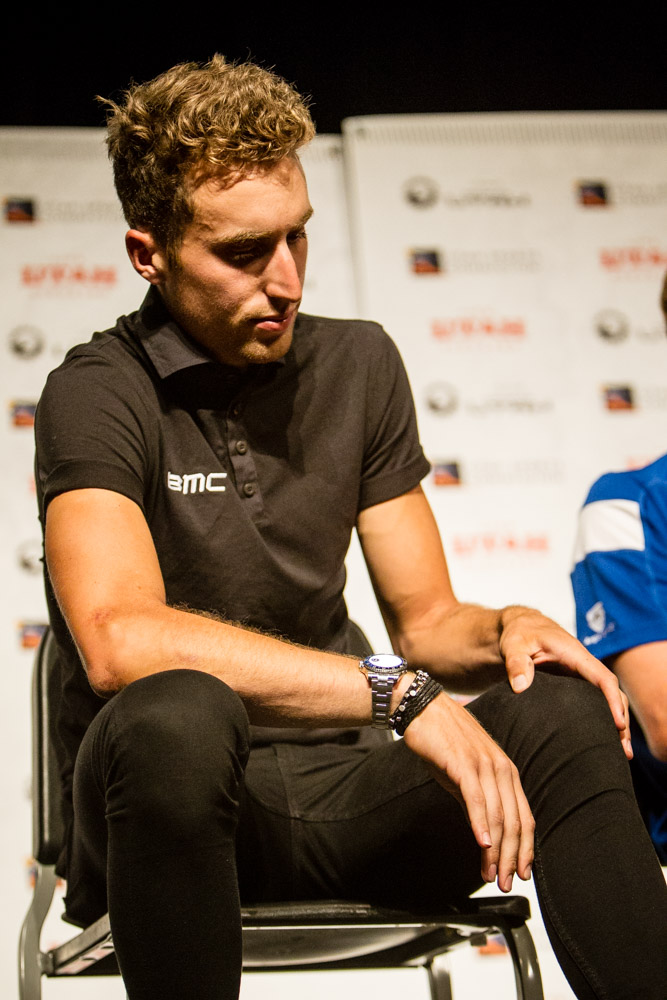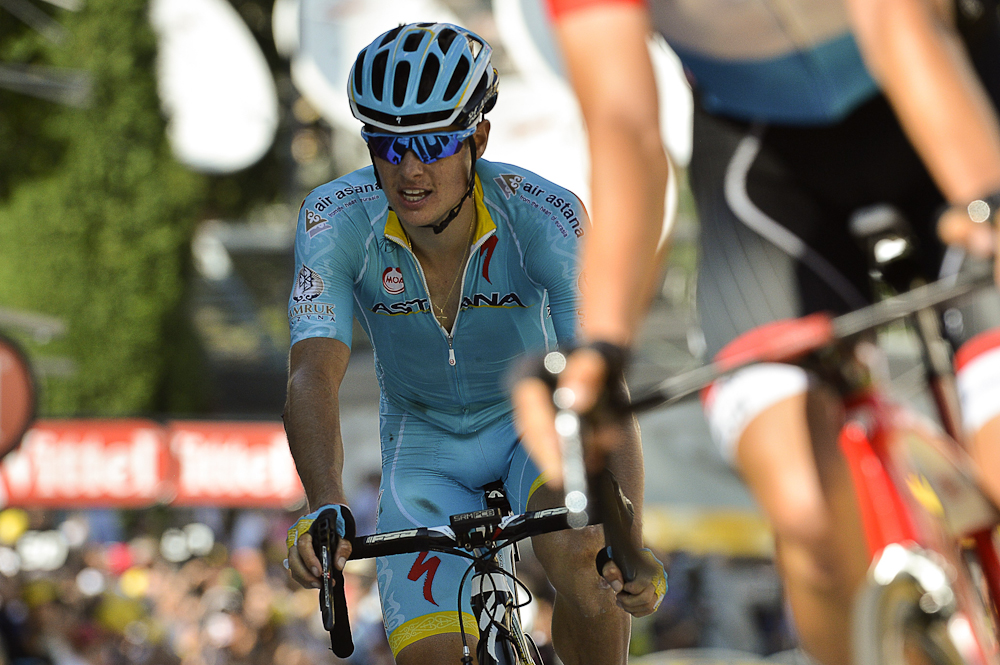Riders and managers question moto safety after recent incidents
BMC’s Ochowicz and Bookwalter call for action from the UCI




A series of recent high-profile incidents among race motos and riders – including a moto colliding with Jakob Fuglsang (Astana) in the Tour de France, and Greg Van Avermaet (BMC) being knocked over by a moto while leading Clasica San Sebastian less than a kilometre from the finish – has raised the issue of rider safety once again.
BMC Racing has threatened legal action over the Van Avermaet crash, and team general manager Jim Ochowicz told Cyclingnews this week that the “powers that be” have got to step up and address the situation.
“We’ve been dealing with vehicles and unsafe conditions for some time,” Ochowicz said. “There was the incident with Taylor Phinney over a year ago, and since then it’s only continued to escalate. I’ve spoken out on this for some time now.”
Ochowiz said one of the issues creating the problem is the size of the peloton and an increase in the number of vehicles allowed on the course with the riders.
“You can’t put 200 riders on the roads anymore,” he said. “There is too much road debris for a field that size. And another thing is the quality of the peloton is not up to those conditions.
“All of the efforts in road construction now are to slow down the traffic,” Ochowicz said. “They’re not thinking about bike races when they build them. We will continue to speak out about it. We’re losing players at a rapid pace who are paid a lot to race their bikes in an unsafe environment.”
The number of vehicles in modern-day racing has also become an issue, Ochowicz said.
Get The Leadout Newsletter
The latest race content, interviews, features, reviews and expert buying guides, direct to your inbox!
“There is a large amount of motos and cars in the way,” he said. “There’s no other way to put it. There’s not enough space to move everyone down the road safely. The vehicles are in the way because there are just too many.
“Even in the breakaway when the break is coming back, you can see it on TV,” he said. “You can see on live TV riders waving motos out of the way because they are too close. It’s not a fantasy. It’s reality.”
The BMC boss believes the UCI needs to institute some form of accreditation or licensing for all drivers in the peloton.
“I don’t know what the qualifications are to drive a vehicle in a race,” he said. “Directeur sportiifs go through a training class with a written test. I don’t know if the other vehicles’ drivers in the race have to do that, but there should be some certification that goes beyond just having a driver’s license.”
Most European races require the photographers and media outlets to provide their own drivers. In most US races, at least those run by Medalist Sports, which oversees all the major North American UCI stage races, the event itself provides the drivers.
Chuck Hodge, who is handling race command at the Larry H. Miller Tour of Utah this week, said the relationship avoids a conflict of interest that can arise when the media assign drivers rather than the race taking that responsibility.
“We provide the photo bike drivers at our events just so we have a little better control over what they do and where they do it,” Hodge said. “In the end, they report to the race organisation, not to the media outlet that they’re carrying. And I think that resolves some of the conflict of interest that a driver will have.
“There’s always a challenge with media about getting the shot versus the safety and not interfering with the race,” Hodge said. “It’s a balance that goes both ways. We love the shots, and we love the TV and we love the photos, but at the same time we want to respect the competition and respect the safety, and that balance is pretty critical.”
But Brent Bookwalter, the BMC rider who is active in the Association of North American Professional Road Cyclists (ANAPRC), said he’s not sure the problem is related to the quality of the drivers.
“I don’t know if they have less resources to find any qualified drivers or maybe the drivers are feeling more pressure to get the good shots on TV or provide the neutral support in a crucial moment of the race,” he said.
Bookwalter said race resources need to be looked at, and if races don’t have enough resources to hire the very best, most qualified drivers available, then the event shouldn’t take place.
“Safety should be first and foremost, and if we can’t ensure the most safe environment, then, as sad as it is, the race should probably take a year off, gather some resources, shorten the days, shorten the kilometres, figure out how to make it safer,” he said.
Riders are trying to address the situation through a number of avenues, Bookwalter said, including the CPA union and ANAPRC.
“We’ve had an organization, the CPA, for a long time that is supposed to serve us in that capacity, and personally I think they’ve done a fairly mediocre job,” he said. “They haven’t been totally non-existent, but I don’t think they’ve maximized their service to us. I think they’re capable of more and we deserve more.
“The North American Riders Association in particular, we’ve kind of stepped up and tried to engage, interact more and raise awareness, too. Most riders don’t even know that there are viable channels to the race organisations, to the UCI, where we can make our concerns heard and voice our opinions and our feelings. That’s really the first step of the battle, and I think we’re on our way.”
But Ochowicz said he has seen little progress this year in addressing rider safety and vehicles inside the race envelope.
“So far I’ve seen no progress in dealing with this,” Ochowicz said. “Nothing is being done. There have been no reports, no discussions, nothing. I don’t see any progress.
“If you go down the list of riders who have been capsized since the start of the season, it’s pretty astonishing and it’s only the first week of August. There is still a lot of racing left. Somebody needs to reach out and get their arms around this.”
Growing up in Missoula, Montana, Pat competed in his first bike race in 1985 at Flathead Lake. He studied English and journalism at the University of Oregon and has covered North American cycling extensively since 2009, as well as racing and teams in Europe and South America. Pat currently lives in the US outside of Portland, Oregon, with his imaginary dog Rusty.